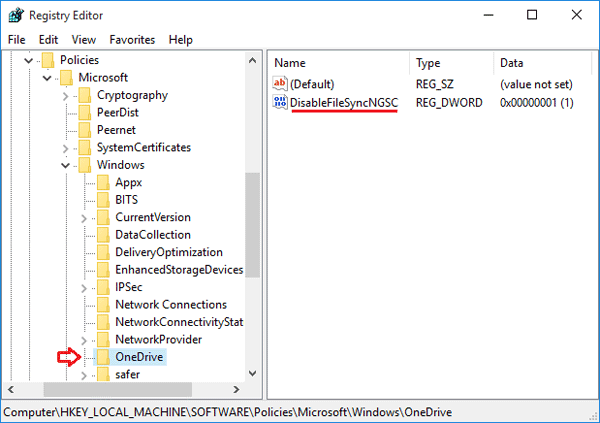
Thus, my recommendation is that you review the settings in the other Microsoft Office apps you use to ensure they’re set to what you want. Most of the settings you adjusted above are shared between Microsoft Office apps, but not all and it seems likely that which settings are shared will change over time. Word should no longer default to using OneDrive. “C:\Users\\Documents\” is another common alternative, and was the default prior to OneDrive’s interference. In the example above, I have a “Documents” folder on my “E:” drive. Set “Default local file location” to a folder on your machine that makes sense to you.Uncheck “Show additional places for saving, even if sign-in may be required”.Uncheck “AutoSave files stored in the Cloud by default in Word”.There are several options I recommend changing. (Screenshot: )Ĭlick on Options in the lower left.

#Disable onedrive free#
(If you’re using the free online version of Microsoft Office applications, then by definition you’re also storing your files online in OneDrive. The use of OneDrive in Microsoft Office applications boils down to a couple of settings we need to adjust. Without the OneDrive app running, there’s nothing special about the OneDrive folder. It’s up to you where you’d like to keep your files, and you can move them to any other folder on your machine or leave them where they are. Here is how you can stop OneDrive from opening at startup from Settings: Right-click the Start icon and select Settings from the list. Depending on how you’ve used (or been forced to use) OneDrive until now, you may find files, a “Documents” folder, or other folders within it. Similarly, this will not remove files from other machines syncing to the same OneDrive account, nor will it remove any files from OneDrive online.Īt this point, your OneDrive folder is just another folder like any other. Uninstalling OneDrive simply removes the cloud synchronization tools. You’ll still find them in your OneDrive folder. Important: this will not remove files from your machine. (Screenshot: )Ĭlick Uninstall to remove OneDrive from your machine.
#Disable onedrive windows#
In Windows Settings, Apps, Installed apps, you can right-click on, or click on the ellipsis next to, “Microsoft OneDrive” to expose an Uninstall option. Even if you’ve never turned it on, you may find that Microsoft turned it on for you. You can find out more about these settings in Why Is My OneDrive Full? This is one feature that’s been implemented poorly, leading to a lot of frustration.

Microsoft Office is just one place it appears.įirst, make sure that OneDrive’s backup options are turned off. I want to start with this optional step because most people who don’t want to use OneDrive don’t want to use it anywhere. If you disable or do not configure this setting, the tutorial will appear at the end of OneDrive Setup. The most important is found in the Save settings of Office apps. In order to stop Microsoft Office applications from using OneDrive, there is a set of options to be adjusted. You can uninstall the Microsoft OneDrive app from Windows via the Settings app, which will decouple your computer from your online OneDrive account.


 0 kommentar(er)
0 kommentar(er)
